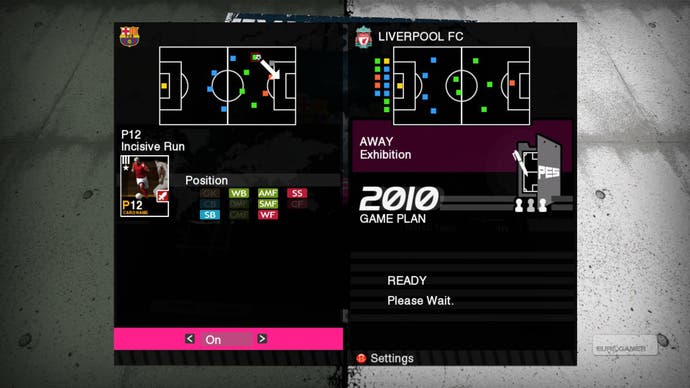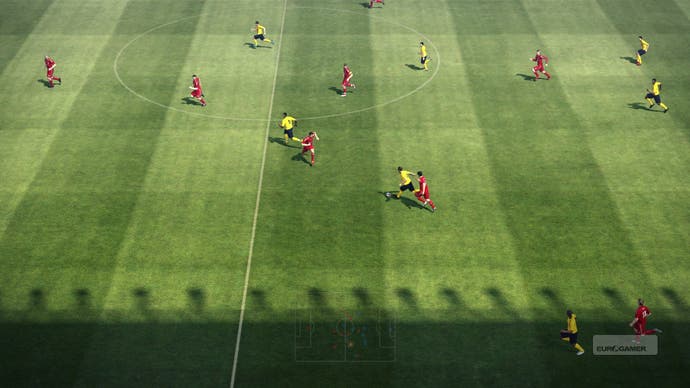PES 2010: Pro Evolution Soccer
Slide away.
The contrast between the first showings of this season's instalments of FIFA and PES could not have been starker. The former was paraded with pomp, powerpoint and Peter Moore at the Emirates Stadium; meanwhile Konami kicked back in a swish hotel room in central London, set up the game on a bunch of screens, and let us settle down and just play.
The Japanese publisher's relaxed approach is refreshing if a touch unsettling. After all, it's arguably the relaxed approach of Seabass and his team that has seen the mighty footballing legend stutter over the course of this generation, while FIFA has raised its game substantially.
But there's a lot to be said for just being handed a game and given the time to - that word again - relax and simply experience it, without suffering the indigestion of a seven-course bullet point banquet.
That's not an criticism of EA's presentational methods, with the latest FIFA coming along nicely. Rather, it's an acknowledgement on Konami's part that, after a series of false starts, endless press-release promises just won't cut it by themselves this time. The game has to do the meaningful talking.
The code on offer is still clearly early and unfinished (running off a PC with a 360 pad plugged in, rather than a debug console), but more than adequate enough to sample a game of a markedly different pace to 2009, test Konami's boasts of a new graphics engine, and fiddle with the transformed tactical model.

Let's start with tactics. Konami has scrapped player star ratings and the previous method for determining your team's playing style in favour of two systems working in tandem: Team Style and Tactical Cards. The former is a series of sliders which affect the general strategy and mentality of your team; the latter a means of determining specific roles for individual players to harness their strengths.
There are team sliders (adjustable between 0 and 100) for Player Support (how many players push up with the ball holder), Support Range (a narrow or wide spread of support), Position Switch (at maximum, think the freedom with which Man Utd switches wingers) and Attacking Style (0 to lead from the wings, 100 to drive through the middle, and a complementary set for defensive strategies.
Of the two playable teams in this build, Liverpool and Barcelona, the Reds' relatively cautious Attacking Style defaults to 20, while Barca's relentless attacking siege is naturally right up the other end of the scale.
PES has long been infatuated with individual skill, and a star's ability to change a game with a brief moment of brilliance. The Card system is a new take on this, designed to complement individual abilities through very specific AI direction. Squad members are dealt a deck of cards each representing a unique skill. Some of these are fixed for obvious reason, such as Reaction, 1-Touch and Slide Tackle. Others can be toggled on or off at will, and this is where your choices can really impact what happens on the pitch.

Konami offers a few examples of his this works in practice. In previous games, if a player is deemed a skilled early crosser of the ball, they'd simply have their long passing stat maxed out. Switch on 'Earlycrosser' card in PES 2010 and the AI player will always be looking to break to space, ready to send a ball over. Once under your control, stats kick on - meaning, if you switch on this card for a player who routinely hoofs the ball into row Z, he might break for space, but the actual cross is no more likely to be accurate.
Similarly, Eto'o's 'Chasing back' card is on by default, so if Barca lose the ball, he'll race to hound it back from the opposition. Switch it off, and he'll leave it to team-mates and hang up the field ready to attack. It's effective in practice.


